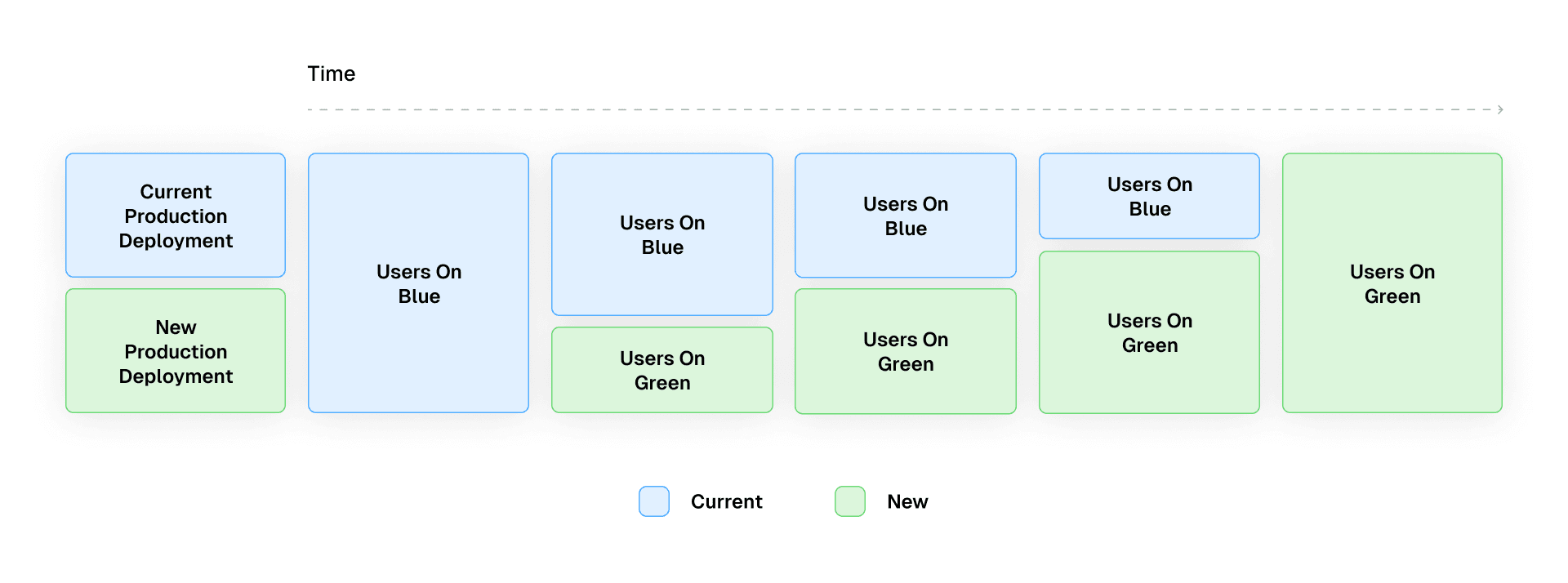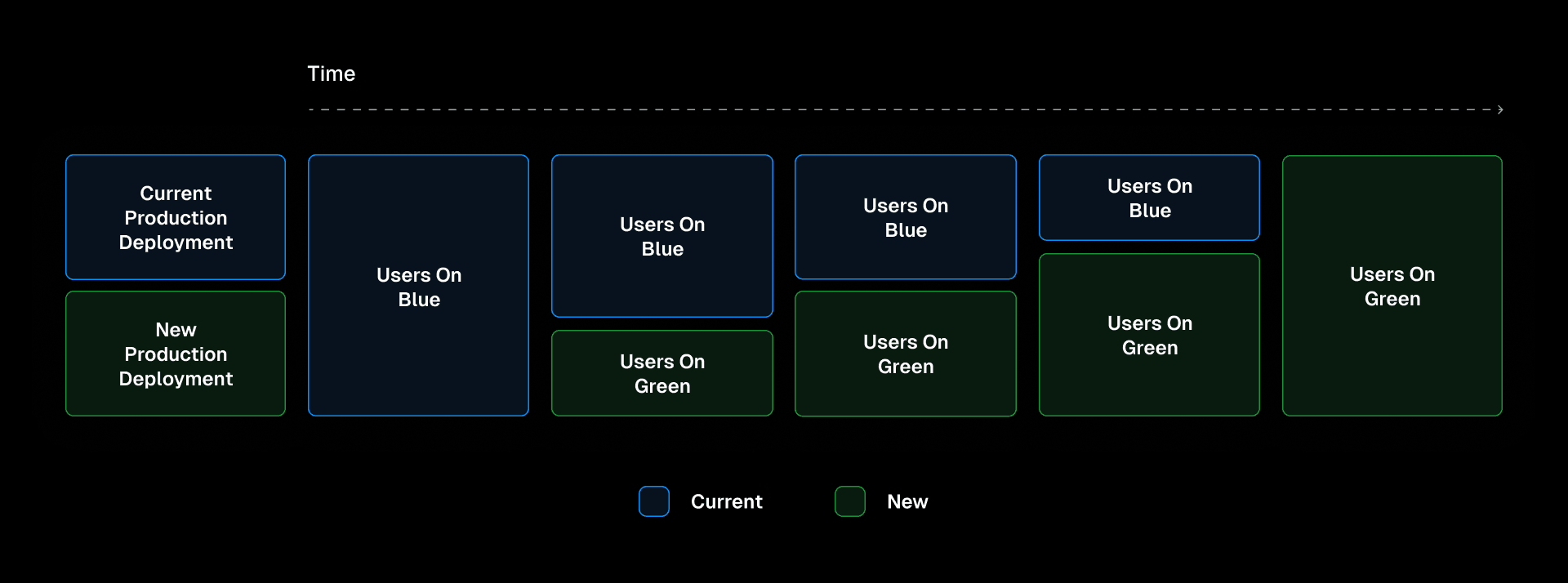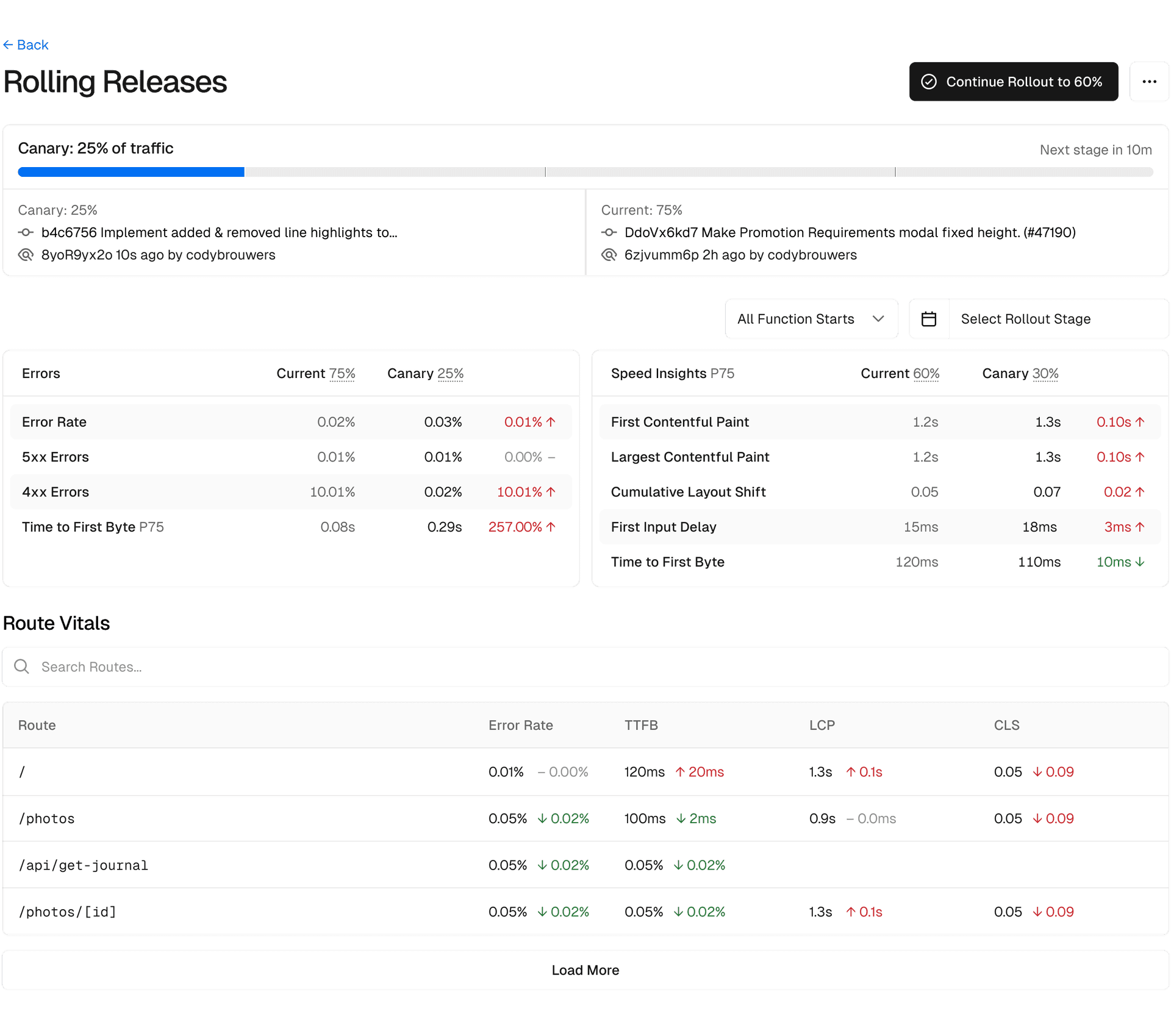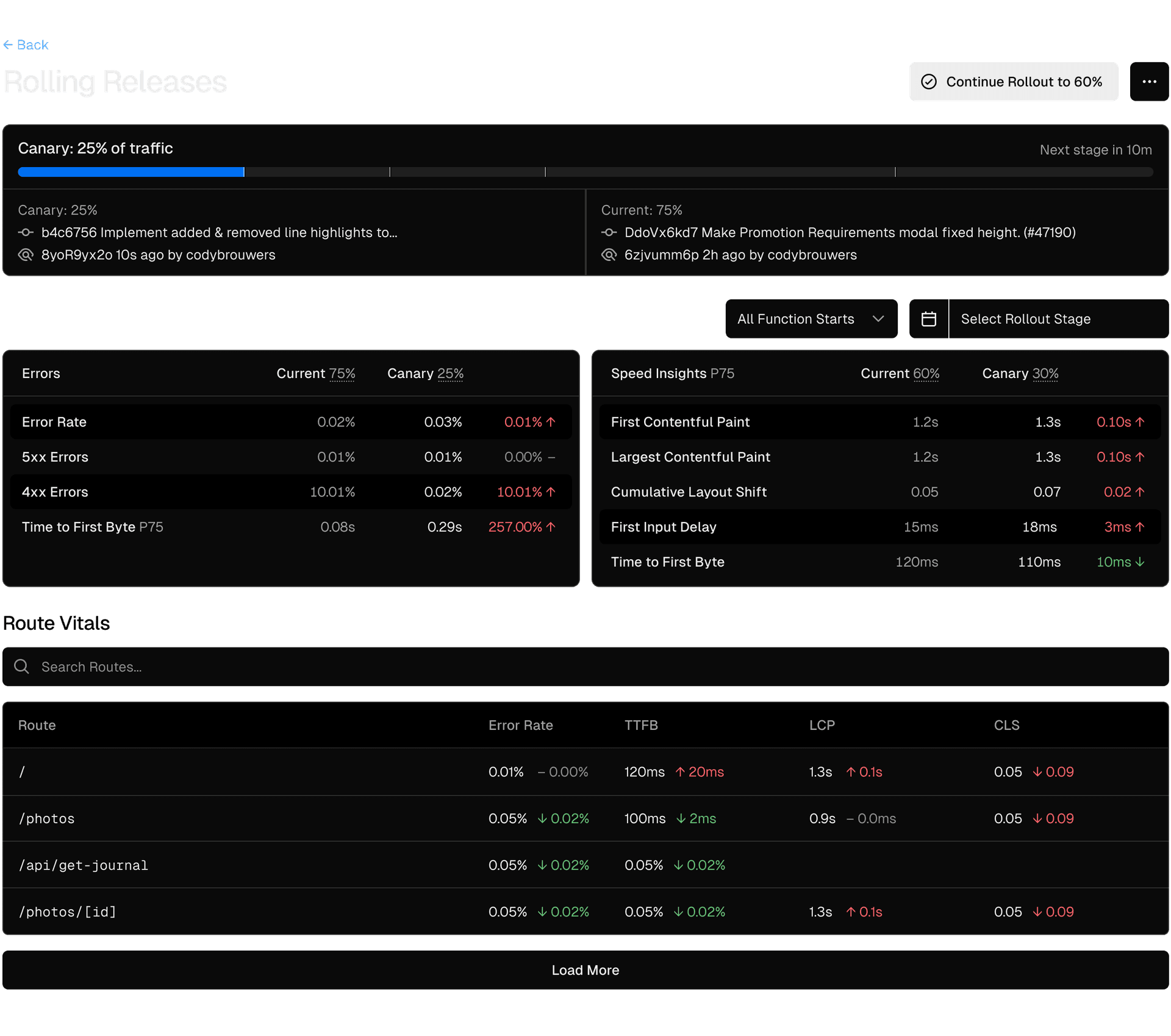4 min read
Blue-green deployments are a great way to mitigate the risks associated with rolling out new software versions.
This methodology allows for incremental exposure of users to new deployments, providing an opportunity to detect and address issues early on, and to revert changes if necessary before a majority of users are affected.
Traditionally, implementing blue-green deployments, especially in environments utilizing Kubernetes (K8s) clusters, introduces two primary challenges:
Architectural gaps: Components upstream of the K8s cluster, like the content delivery network (CDN), may not seamlessly integrate with the blue-green rollout process. This lack of awareness can lead to discrepancies in user experience and potential errors.
Infrastructure overhead: Maintaining duplicate infrastructure for the sake of redundancy leads to increased infrastructure costs, which may not be justifiable or sustainable for all organizations.
Leveraging Vercel for deploying blue-green deployments offers solutions to these challenges, enhancing both the architectural cohesion and the cost efficiency of such deployment strategies.
Link to headingWhat are blue-green deployments?
The blue-green deployment strategy means you serve two versions of your application: "Blue" and "Green." You serve the current version of your application (Blue), and then you can deploy a different version of your application (Green) without affecting the Blue environment.


This keeps your Blue application running seamlessly for production users while you test and deploy your Green application. When you're ready to serve users your Green application, you can incrementally or fully switch to your new Green application with no perceptible change for your users.
At their core, blue-green deployments facilitate the gradual exposure of new software versions to users. Ideally, if the new version operates identically to the old one, the deployment proceeds without issues. The decision to fully transition to the new version is typically informed by observability (o11y) data, which can be interpreted either manually by developers or automatically through anomaly detection systems.
Link to headingWhy roll with blue-green deployments?
The benefits of blue-green deployments are significant, including:
Risk reduction: Minimizes the potential negative impacts of new software rollouts.
Limited exposure: Any issues affect only a small subset of users.
Rapid reversion: Problematic changes can be rolled back quickly before widespread user exposure.
Cache optimization: Allows for the prepopulation of caches with new data, ensuring smoother performance upon broader release.
Link to headingUsing Rolling Releases
Rolling Releases is a Vercel feature for creating exactly this sort of release safety. In just a few clicks, you can set up multi-stage deployments that advance automatically or manually. Additionally, you can use data from Vercel Observability or external sources to verify the new deployment's acceptability.


Link to headingCreating safe rollouts on Vercel
Vercel enhances blue-green deployments through the integration of three core platform primitives:
Skew Protection: Ensures consistent user exposure to only one software version at a time, preventing erratic behavior from version toggling.
Edge Config: Facilitates the configuration of deployments at Vercel’s edge, dictating which versions are active and their respective user traffic allocations.
Middleware: Acts as a dynamic routing layer, enabling comprehensive control over deployment rollouts and selection processes.
This system fundamentally relies on middleware to route user requests to the appropriate deployment, as determined by Edge Config, with Skew Protection guaranteeing a consistent end user experience.
Link to headingLeveraging serverless for scalable deployments
The financial implications of maintaining multiple parallel deployments are a significant consideration for organizations looking to implement blue-green or other phased deployment strategies. Traditional architectures often require duplicating a considerable portion of the infrastructure to support these strategies, leading to increased costs in terms of both resources and management overhead.
Vercel's platform fundamentally changes this equation through its use of immutable deployments and a serverless architecture. This approach allows for the creation and management of multiple deployments simultaneously without the need to replicate the underlying infrastructure. Each deployment is treated as an immutable snapshot, which can be served to users based on the configured deployment strategy.
This model has several key advantages:
Reduced overhead: The serverless nature of Vercel's platform eliminates the need for provisioning or managing servers, reducing administrative overhead and complexity.
Scalability: Vercel's infrastructure automatically scales to meet demand, ensuring that deployments remain performant and responsive regardless of the number of versions being served or the volume of traffic.
Cost effectiveness: Since resources are consumed on a per-request basis, and there's no need to maintain idle infrastructure, the costs associated with running multiple deployments are significantly reduced. This makes sophisticated deployment strategies like blue-green accessible even to smaller teams and organizations with limited budgets.
Link to headingEven more innovative rollout strategies
Vercel’s middleware not only offers granular control over deployments, but also supports innovative deployment strategies:
Multicolor deployments: Beyond just blue and green, deployments can introduce additional "colors" or versions for specific user groups, like internal testing by employees.
Shadow rollouts: Traffic is officially served to one deployment while being simultaneously routed to another in the background. This approach enables error detection and cache priming with minimal user impact.
By harnessing Vercel’s cutting-edge technology and platform capabilities, organizations can implement more sophisticated, efficient, and secure blue-green deployment strategies, setting a new standard for software rollout methodologies.
Blue-green deployments on Vercel
See how Vercel's Skew Protection feature enables production-ready blue-green deployments with just a few lines of code.
Get Started Now